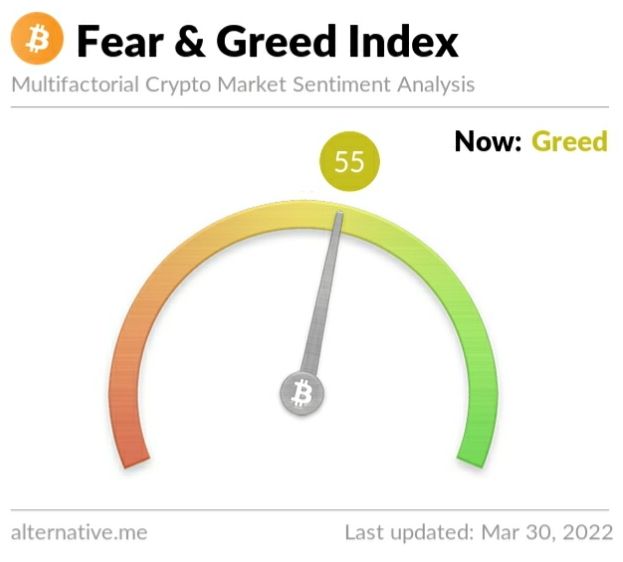Bitcoin fear and greed index on Wednesday, March 30, 2022, went from the greed level of 56 to the level of 55 as per the alternative. me. The Fear and Greed index is a technique for assessing investors’ emotions toward the market.
The indicator, which is composed of two opposing emotions, fear, and greed, determines whether the market is bullish (markets experiencing persistent increase) or bearish (markets suffering sustained decrease).
Also Read| Trade Setup: Top 15 things to know before market opens on March 30, 2022
The index’s primary principle is that when investors are frightened, stock prices trade far lower than their true worth, and when investors are greedy, they pay far more than the stock’s intrinsic value.
Extreme fear indicates that investors are too concerned and that there is a chance to purchase, whereas extreme greed indicates that the market is ready for a correction.
Also Read| Income Tax Dept finds Rs 1,000 crore bogus expenses in raids on Hero Motocrop
The index is rated from 0 to 100. The 0 indicates that investors are extremely negative or afraid, while the 100 indicates that investors are overly optimistic and greedy.
Fear is defined as a score between 0 and 24, whereas extreme fear is a value between 25 and 49. Neutral is 50, 51 to 74 is greed, and 75 is excessive greed.
Also Read| Joe Biden’s budget proposal aims to raise $11 billion from crypto taxes
The bitcoin Fear and Greed index calculates its score using six variables. These are volatility, market momentum/volume, social media, surveys (now paused), dominance, and trends.
The index efficiently gauges investors’ sentiments toward the market and provides them with a simplified view of how the market is performing.
Also Read| US Stock Market: DJIA, S&P500 and Nasdaq turns green in early trade on Tuesday
Although perspectives on the usefulness of the crypto fear and greed index differ, it has traditionally been a reliable indicator of substantial change.
Investors generally believe that an index is a valuable tool for evaluating markets, as long as it is not the sole instrument used to make judgments and you do your own research.







